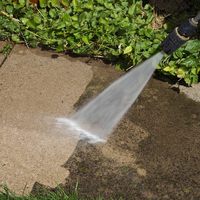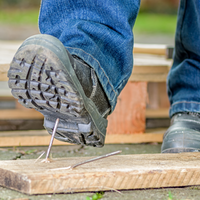Best safety Helmet use in industries
The head is the only organ of the human body that is totally encased in bone. This by decree of nature states the importance of protecting a very vital functioning component of our body, the brain.
Safety helmets or Hard Hats are designed to protect the head against falling objects also flying items and the side of the head, eyes, and neck from any untoward effects, knocks, scratches, and electrical openness, and so on.

Hard Hats
Hard hats can protect employees from impact and penetration hazards as well as from electrical shock and burn hazards. Protective headgear must meet ANSI standard Z89.1-2009 or later.
Hard hats are divided into two types and three industrial classes:
Type I hard hats are intended to reduce the force of impact resulting from a blow only to the top of the head. This form of impact, for example, may result from a hammer or nail gun falling from above.
Type II hard hats are intended to reduce the force of lateral impact resulting from a blow which may be received off-center, from the side, or to the top of the head. This form of impact, for example, may result from contact with the sharp corner of a side beam.
Class G (formerly known as Class A) – These hard hats are considered for general use and offer protection against low-voltage electrical conductors up to 2,200 volts (phase to ground).
Class E (formerly known as Class B) – These helmets are intended for electrical work and offer protection against exposed high-voltage electrical conductors up to 20,000 volts (phase to ground).
Class C – These helmets do not offer any electrical protection and are often electrically conductive.
Each hard hat should bear a label inside the shell that lists the manufacturer, the ANSI designation and the class of the hat.
Bump Caps
Unlike hard hats, bump caps do not offer protection against falling or flying objects. However, bump caps provide excellent protection against accidental impact with fixed objects, such as exposed pipes or beams. They should be worn when working in areas with low overhead hazards. Bump caps do not have an ANSI designation.
Care and Storage
Periodic cleaning and inspection will extend the useful life of protective headgear. A daily inspection of the hard hat shell, suspension system and other accessories for holes, cracks, tears or other damage that might compromise the protective value of the hat is essential. Paints, paint thinners and some cleaning agents can weaken the shells of hard hats and may eliminate electrical resistance. Do not store protective headgear in direct sunlight, as UV light and extreme heat can cause damage.
Always replace a hard hat if it sustains an impact, even if damage is not noticeable. Suspension systems can be replaced when damaged or when excessive wear is noted.
Types of Helmet and their applications
White helmets are worn by engineers, supervisors, foremen and managers
- Professionals who are engaged in welding and high heat applications normally wear brow fiberglass coloured safety helmets
- Green coloured helmets are normally worn by safety inspectors and new workers
- Labourers and earth-moving operator swear yellow coloured helmets
- Blue coloured helmets are worn by carpenters and technical advisers
- Orange coloured helmets are worn by road crews, visitors or new employees
Purpose of using helmet
Industrial protection- There are various kinds of head protectors, each intended for explicit applications. Note that not all safety helmets offer a similar degree of safety, so make certain to pick one explicitly intended for the application you are searching for.
head Protection- Safety helmets are planned explicitly to give safety to the laborers from injury infiltration, electric wounds, and solid head impacts, which can be caused in view of flying or falling items
Face Protection – Safety helments also protect the face from falling object with accomplished with safety glass.
Finally, Always wear a safety helmet to ensure full protection and remember, in extreme cases, these injuries may lead to permanent disability or even death causing irreparable loss and agony to you and your loved ones. Don’t ignore using your head protector(Helmets) Your safety is our responsibility
For personal protective equipment (Helmets) contact

















